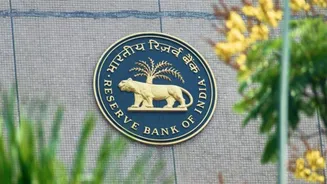Loan Growth Analysis
The primary focus of this analysis centers on the loan growth of HDFC Bank and how it might influence the earnings reported in the second quarter of fiscal
year 2026. The financial sector often uses loan growth as an indicator of a bank’s ability to lend and its overall financial health. Increased loan growth frequently points to greater profitability for banks, since it results in more interest income. Therefore, market observers will be scrutinizing the latest figures for a clear picture of how well HDFC Bank is doing. Moreover, the context of the economic landscape in which HDFC Bank is operating, including interest rate fluctuations and general economic indicators that affect loan demand, will be considered. Understanding the alignment between loan growth and earnings provides critical insights into the bank's ability to maintain a healthy financial standing in the market.
Earnings Expectations Explored
Expectations around HDFC Bank's earnings for the second quarter of fiscal year 2026 will be a central point of interest. Analysts will likely review various metrics to determine whether the results meet or exceed predicted figures. This encompasses a deep dive into the bank's revenue streams, looking at interest income from loans, investment returns, and the impact of non-interest income on the bottom line. Factors that can affect these earnings include any increase in Non-Performing Assets (NPAs) or shifts in operational expenses. Comparing anticipated and actual earnings provides insights into the bank's operational efficiency and strategic direction. Furthermore, a thorough understanding of these key aspects is essential for forming a well-rounded perspective of HDFC Bank's financial health, as it reflects how well the bank manages its assets and sustains profitability during a specific period.
Market Influences Examined
Many external market forces impact HDFC Bank's performance and its loan growth, as well as its earnings. Changes in interest rates can significantly affect loan demand and, consequently, a bank's ability to earn. Furthermore, regulatory policies from the Reserve Bank of India (RBI) have a great impact on how the bank operates, particularly on aspects of capital adequacy and lending practices. Additionally, the general state of the Indian economy plays a crucial role. Periods of high economic growth normally lead to greater borrowing and lending activity, whilst periods of economic slowdown may have a negative effect. Examining these market factors alongside the bank's internal strategies and risk management practices gives a more complete picture of its prospects for sustainable growth and its ability to handle any external economic uncertainties. This comprehensive understanding ensures a clearer view on the long-term potential of the bank.













